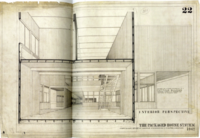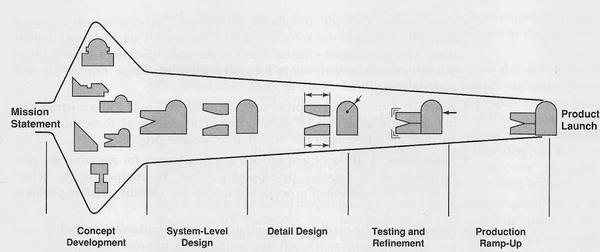Modularisation: A modern process for project management
Nearly all projects are characterized by a certain degree of complexity and uncertainty. However, every project is unique and its success depends on various product development and management processes vital for the current rapidly changing business environment. Within this context, it has become increasingly important for companies with vast product portfolio to be able to manage the project complexity in order to increase efficiency and ensure competitive advantage in the long run.
Modularization is a process that breaks down complex systems into small and solvable parts. By dividing the product structure into modules, companies seek to optimize the way they function and operate in terms of transforming their products in a more flexible and accurate way. Modularization has gained momentum over the years as it helps projects achieve significant benefits by removing underperforming processes, products and parts. Since it is still a relatively new field outside the automotive and aircraft industry where it initially evolved, there is a growing interest in the development process of the modular patterns.
The purpose of this article is to explore the potential of modularization as a proactive strategy and product development tool for managing effectively the complexity derived from project and portfolio management processes. The article comes along with a detailed analysis on product modularization.
Keywords: complexity management; product modularity; modularization;
Contents |
History
This section refers to the evolution of modularization in order to get an understanding of the origins of the concept. The term module comes originally from the Latin term modulus and it is the diminutive of the term modus which means measure. Several meanings of the term module exist but the most important range from “a standard or unit for measuring” to a separable component that is “interchangeable” with others for assembly into units of different size, complexity or function.
In architecture, modules were associated with the Bauhaus philosophy leading to the configuration of the so –called “building blocks” (Baukasten) being individual functional units in buildings, easy to be assembled. Purpose was that modules were used as an arbitrary unit adopted to regulate the dimensions and proportions of parts of the building system for better design and coordination. One extraordinary project example of industrialized building blocks was the industrialized modular housing “The Packaged House” designed by well-known architects Konrad Wachsmann and Walter Gropius. It described a modular system comprising of a coordinated set of elements that allowed an infinite number of interactions for the final configuration and satisfied the housing needs for functionality, quality, uniformity and precision. However, it was not realized in practice, but the designs reflect the conceptualization of modularity.
Modular Products
Modules
Modules are different from building blocks in terms of the degree of possessed functionality compared to the final product. Building blocks are stand-ins for modules. They have a standardized interface which allows assembly by combinations, even though they are characterized by a very limited functionality compared to the construction of which they are a part. However, modules possess a significant amount of functionality and can configure the final product by using building blocks which contain specifications of both interface and functionality and allow the combination with other modules.
Modular design
The idea to design a system with a modular focus lies on the multiple benefits of making available to the customer a variety of choices regarding the final product. Many new products were made possible by creating flexible solutions through plugging in a new module to the existing one, leading to the creation of a large product portfolio among companies.
Product architecture
Product architecture is defined as the arrangement of functional elements, the mapping from functional elements to physical components and the specification of the interfaces among the physical components. Product architecture is determined early in the development process. Ulrich and Eppinger provided a detailed analysis of the design process. In the following figure, the generic development process is composed of the following phases: concept development, system-level design, detail design, testing and refinement and production ramp-up.
Integrated Architecture vs Modular Architecture
“The characteristics of modular and integrated architectures are compared in the following table based on Ulrich and Eppinger (1995). Products are rarely strictly modular or integrated; rather, they involve some degree of modularity.”
| Integrated Architecture | Modular Architecture |
| A collection of components that implement some functions of a product is called a block. | A collection of components that implement some functions of a product is called a module. |
| The functional elements of a product are implemented using more than one block | Same as an integrated architecture. |
| A single block implements many functional elements. | A module implements one or a few functional elements in their entirety. |
| The interactions between blocks are ill-defined and may be incidental to the primary functions of the products. | The interactions between modules are well defined and are generally fundamental to the primary function of the product. |
| Product performance can be enhanced through an integrated architecture. | Product performance may not be enhanced by an modular architecture. |
| Changing a block in an integrated product may influence many functional elements and require changes to several related blocks. | Changing a few isolated functional elements of a product may not affect the design of other modules |
Tools
The main modular approaches
Functional approach
Component approach
Modular Function Deployment (MFD)
Modular Function Deployment tool is used as a step by step process of how to investigate which part of the architecture should be modularised and which should be standardised.
Application
Modular Construction
Permanent Modular Construction
Computer Industry
Advantages/Benefits offered by Modularisation
Challenges using Modularisation
Cross-functional Modularisation
Limitations
Annotated Bibliography
References
References are still under development

